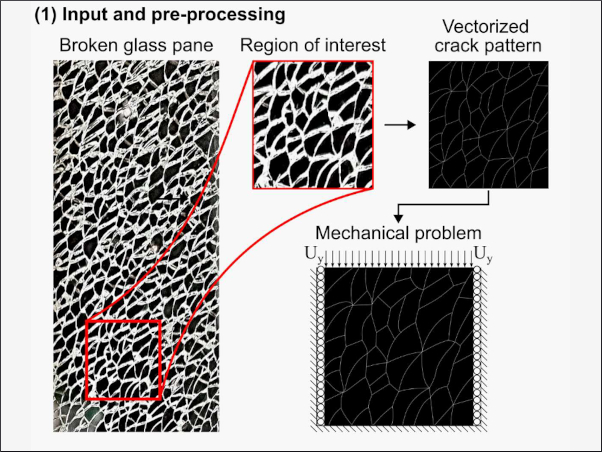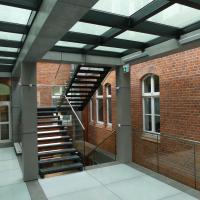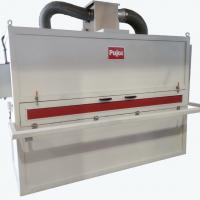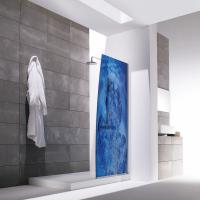 The variables that relate to this occurrence are as follows:
The variables that relate to this occurrence are as follows:
- Size and weight of person
- Part of the body that impacts the glass; hand, leg, head, trunk and their relative hardnesses
- Velocity (speed) of the body when impacting the glass
- Angle of impact; e.g. 90º (normal to) or 5º (glancing)
The only definite conclusions that can be made are that the impacts are from a semi-hard body acting over a relatively small, unspecified area. The duration of loading should be short though of indeterminate length. Over the many years that the subject of Human Safety has been studied, a considerable amount of data has been collected on accidents. Analysis has given data on:
- The age and sex of those involved in accidents
- The type and position of glazing involved in accidents and has allowed some quantification of the energy dissipated in an accident.
Classification Methods
The British Standard used for classification of ‘Safety Glasses’ is BS 6206: 1981 ‘Specification for impact performance requirements for flat safety glass and safety plastics for use in buildings’. BS 6206 requires that the glass does not break or breaks safely (as defined in BS 6206) when subjected to a pendulum impact from a lead-shot filled bag weighing 45 kg. This impact method is designed to represent accidental impact from a human body.
Three classification levels are achievable – Class A, the highest, when the impactor is swung through a drop height of 1219mm, Class B, 457mm drop height, and Class C, 305mm drop height. Class A safety glass is not required by any of the regulations or standards related to human impact safety, but is part of the requirement for some types of barriers in BS 6180 ‘Barriers in and about buildings’, where containment, guarding, or prevention from falling is required. BS 6206 defines the term breaks safely by reference to the outcome of the impact test.
- Toughened glass breaks safely if the glass breaks into sufficiently small fragments after impact, i.e. if the weight of the 10 largest crack-free particles weigh less than the equivalent of 6500mm² of the original sample.
- Laminated glass, wired glass and filmed glass are deemed to have broken safely if, after the impact, any glass fragments which fall off are not too large (defined in BS 6206) and it is not possible to pass a 75mm diameter sphere through any opening formed in the glass. Other glass products used for glazing, e.g. annealed (ordinary) glass, or heat strengthened glass, do not break safely, and can only pass the requirements if they do not break in the test.
The test requires either a standard size or the maximum size of pane available if this is smaller than the standard size. The test specimen size is 865 x 1930mm.
A safety glass only complies with BS 6206 if it is marked as doing so. The standard requires that all installed panels shall be marked to include the following:
- An identifiable name or trademark or other mark capable of identification through a suitable source
- The type of material
- The number of the British Standard, i.e. BS 6206
- The classification relating to impact test behaviour
(Class A, B or C).
These marks shall be permanent and applied before installation in a position to remain visible after installation. All suppliers of final cut sizes of safety glass should mark the glass in accordance with BS 6206.
The Purpose of Safety Regulations and Standards The regulations, standards and expert advice on safety glazing are concerned with reducing the possibility of severe cutting and piercing injuries. Making anything completely safe is impossible, and the same applies to glazing. But it is possible to put appropriate glazing products in the most vulnerable positions, which are termed “critical locations” in the regulations and standards.
The regulations, standards and expert advice on safety glazing are concerned with reducing the possibility of severe cutting and piercing injuries. Making anything completely safe is impossible, and the same applies to glazing. But it is possible to put appropriate glazing products in the most vulnerable positions, which are termed “critical locations” in the regulations and standards.
In none of the regulations or standards which make requirements for safety glass, does the type of glass receive major attention. The requirements are all couched in terms of conformity with BS 6206 classification levels. Only where glass can be used which is not required to be a safety glass, to BS 6206, do the regulations and standards refer to the type of glass.
Hazardous Areas
Over the years since 1966 several studies have been made, around the world, to gather data on accidents. From this and other research data it has been possible to produce a list of areas, where, if glass is used in buildings, there can exist an increased risk of accident and care should be taken on glass specification.
Hazardous areas:
- Doors and side panels to doors
- Low-level glazing
- Swimming pools and bathrooms
- Buildings with special activity, e.g. gymnasia
Various British Standards have, over the years, given advice onappropriate glass types to use in these various locations. Currently, the subject is covered by Building Regulations, Part N in England & Wales, Part P in Scotland and Part V in Northern Ireland, as well as by BS 6262: ‘Code of practice for glazing for buildings’: Part 4 ‘Safety related to human impact’. Knowing the areas in which safety glasses should be used and the appropriate class of safety glass to use are essential. With this knowledge the appropriate safety glass can be obtained from the glass manufacturer/processor. When installed, safety glass reduces the risks of serious injury in the event of accidental impact.
Date: 15 December 2008
The variables that relate to this occurrence are as follows:- Size and weight of person- Part of the body that impacts
2008-12-15T12:00:00
Glass and Safety
glassonweb.com 
















